How to Choose the Right Kitchen Sink
The etymology of the phrase “everything but the kitchen sink” probably has to do with the fact that the sink is difficult to move. For instance, if a person absconded with “everything but the kitchen sink,” it means he or she made off with every conceivable portable item. But here is a new way of looking at the term: What if said person didn’t take the hypothetical sink because it was too necessary to the kitchen?
When you think about it, there are very few features in the home that are used as often. And what other home item performs as many different tasks? It could be argued that the selection of a sink is one of the most important kitchen choices you will make — and it’s a decision that will affect your daily life for many years to come. We spoke to designers who belong to the National Kitchen and Bath Association (NKBA) about how to select the right sink.
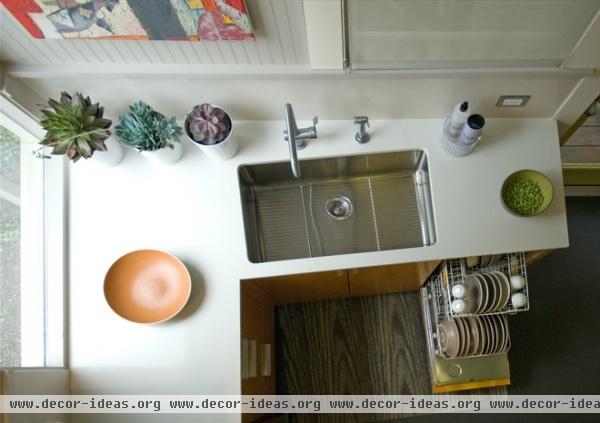
How Many Basins, and in What Configuration?
1. A large, single sink.
Pros: A single, deep basin means you can easily soak or wash a big pan or prep large quantities of food.
Cons: Rinsing vegetables while soaking a large casserole dish requires a bit of juggling — as does hand washing and rinsing china or stemware.
A certified Master Kitchen and Bath Designer for 30 years, Sharon Flatley has seen the kitchen sink grow wider, deeper and more diverse. “There’s so much more to choose from now,” she says.
These days Flatley, the principal of Flatley & Associates in Dallas, says most of her clients opt for a single, deep basin that is 33 to 36 inches wide and 8 to 10 inches deep. “This kind of sink is very versatile,” she says. “It works whether you cook a lot or not much.”
Flatley says the delicate dance of doing prep work and cleaning duty at the same time can be accomplished with accessories. “Most sink manufacturers offer a wealth of add-ons,” she says, “including rinse baskets that fit nicely in the basin.”
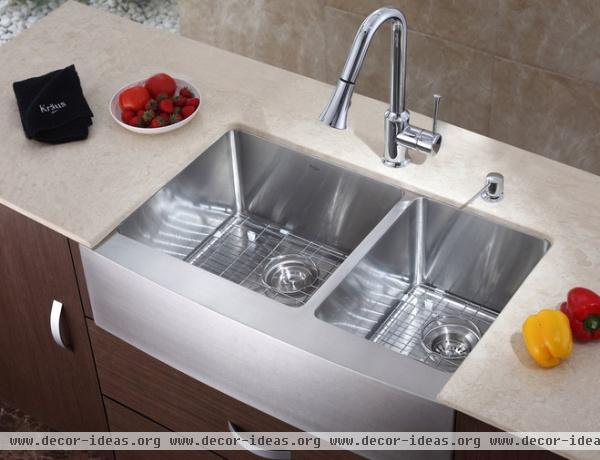
2. Two basins of differing sizes (a 60/40 or offset sink).
Pros: Two basins allow you to perform separate tasks, such as cleaning dishes and preparing food, with ease. A 60/40 sink has one basin that is usually about 18 inches wide and another that is 14 inches wide. The idea is that you can clean up in the large basin and prep in the smaller one. Dual basins also come in handy when you are washing items you don’t want to put in the dishwasher (soap in one basin, rinse water in the other).
Cons: A smaller basin makes it harder to wash and soak large pans.
“For clients who want flexibility, a double sink can be the way to go,” says Flatley. “There are also a number of people who are accustomed to working with two basins, and they don’t want to change.”
Dave Burcher, principal at In House in New York, notes that double sinks aren’t necessarily limited to the 60/40 split. “Although that ratio is the most common one, the customization options are nearly limitless,” he says.
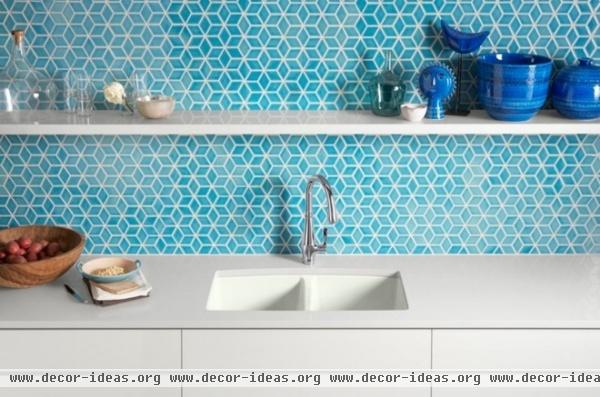
3. Two basins of equal sizes (a 50/50 sink).
Pros: This is for people who love symmetry in design. It also has the benefit of allowing separate tasks (cleaning, prepping and washing, rinsing).
Cons: That large pan could be soaking on the counter.
“Some people have only worked in this kind of sink, and so they prefer it,” says Flatley. “But I personally have not had a client ask for one in several years.”
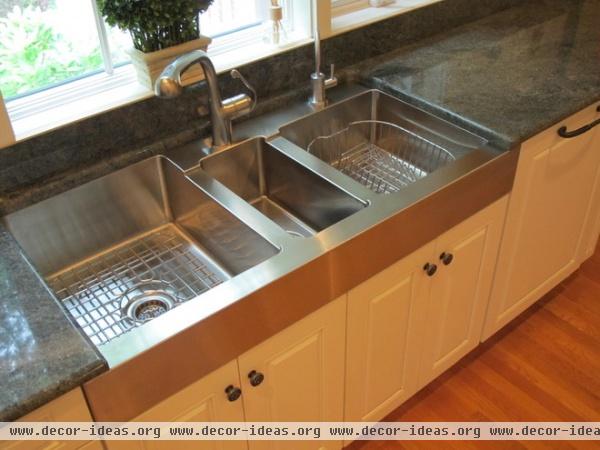
4. Three basins (two large ones and one small one with a garbage disposal).
Pros: You can use the garbage disposal independently of the sink.
Cons: In some models, such as this one, you can’t sweep food scraps off the counter and into the disposal (this could be remedied with a cutting board insert). Because it is a wider sink, more space is needed.
“For people who like to keep the garbage disposal away from the food, this is a good option,” says Flatley.
Burcher notes that during cleanup, accessing the garbage disposal while a pan is soaking can be annoying. “This setup eliminates that,” he says.
More about configuring sinks
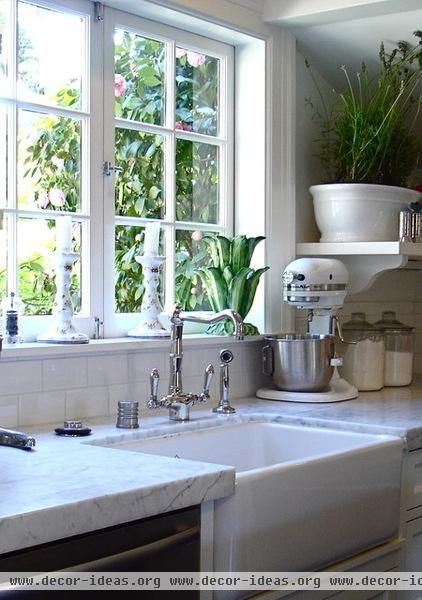
Choosing the Shape of Your Sink
1. Farmhouse.
Pros: Many farmhouse sinks are simply single, large basins. The difference is their distinctive apron front, which has a vintage vibe many homeowners love. For a typical sink, the basin can be 4 inches away from the edge of the countertop, but this sink can sit a bit beyond the counter line. For people of shorter stature and kids, a farmhouse sink can be more accessible. If you choose a porcelain or ceramic farmhouse sink, there are a wealth of color options.
Cons: A farmhouse sink makes a deliberate design statement that will be with you for a long time — which is wonderful, unless your tastes change.
“A farmhouse sink is mostly a pure aesthetic choice,” says Flatley. “It functions like a large single sink.”
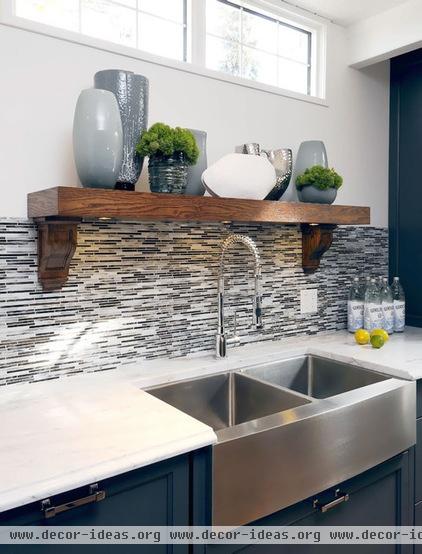
2. Double farmhouse.
Pros: Same benefits as any other double sink.
Cons: It does not have the true vintage style of a single-basin farmhouse sink.
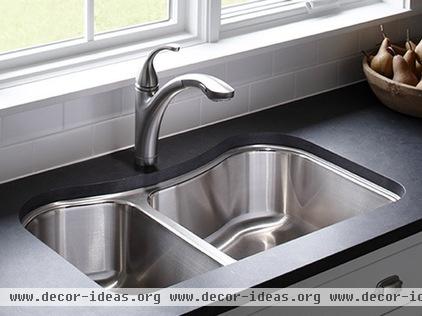
3. Rounded sides.
Pros: Many homeowners consider a curved sink easier to clean than one with square edges.
Cons: If a sleek, minimalist look is your kitchen style, this might not be the look you’re after.
Butcher notes that newer sinks from Rohl have crisp, angular corners near the spot where they join the countertop but rounded corners at the bottom of the basin where most of the cleanup happens. “This feature gives people the best of both worlds,” he says.
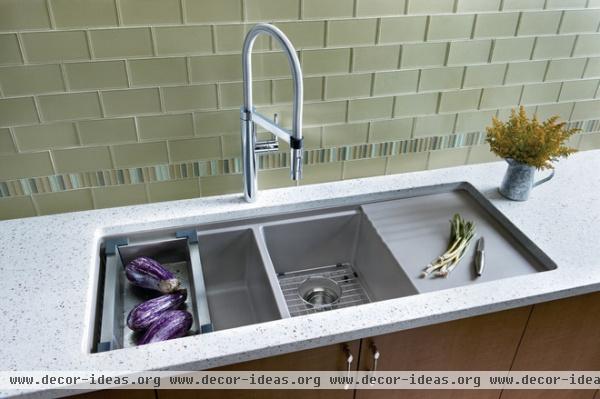
4. Built-in drainboard.
Pros: Of course, it’s great for draining dishes, so if you do a lot of hand washing, it’s convenient. The drainboard can also allow fruits and vegetables to dry after washing.
Cons: This is a wider sink that eats up countertop space.
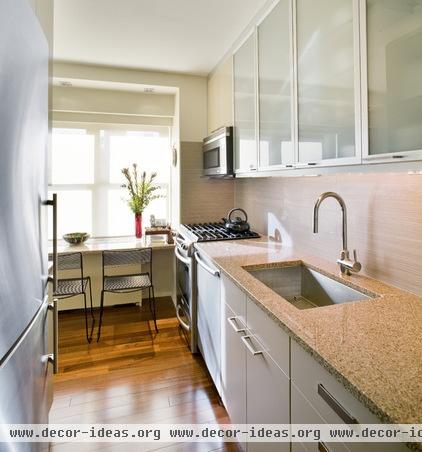
Choosing a Sink Material
1. Stainless steel.
Pros: This is a very durable, easy-to-clean material.
Cons: The metal can scratch, but the marks can be buffed out of brushed stainless steel. Most manufacturers offer bottom grids (wire trays that are placed in the bottom of the sink to prevent scratching). Also, if you live in a area with hard water, water spots can be a problem.
“Stainless steel is a nearly indestructible, classic material,” says Flatley. Butcher says, “I tell my clients that stainless steel is very flexible. It tends to blend into whatever environment you put it in — traditional or modern.”
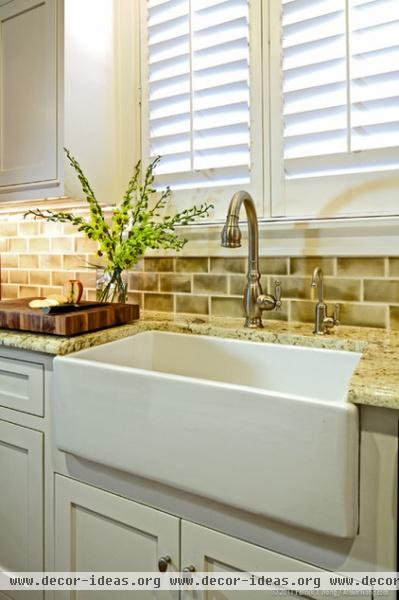
2. Porcelain.
Pros: This is a traditional material that looks authentic in kitchens with a vintage style. For people who love color, the choices are endless.
Cons: Porcelain sinks can chip, leaving a black mark. Metal pans can also leave black marks or scuffs that are difficult to remove.
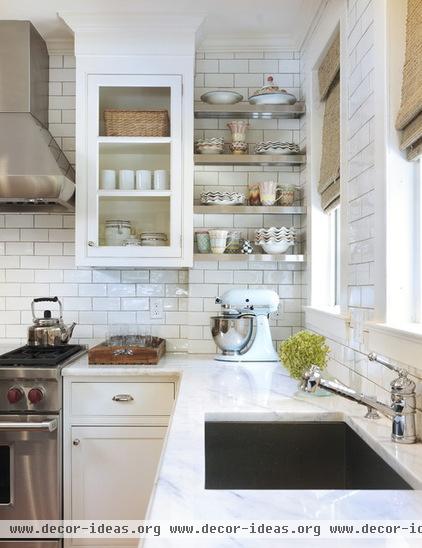
3. Granite composite.
Pros: Made of granite particles and polymers, this material resists scratches and chips. It does not show water spots.
Cons: Lighter-colored granite composite sinks can stain, and some special maintenance is required.
“We are installing a lot of granite composite sinks in Dallas,” says Flatley. “Many people here have hard water, and this doesn’t show spots the way stainless steel does.”
More about granite composite sinks
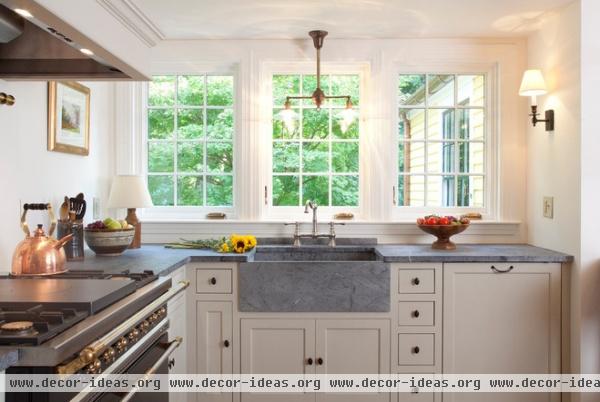
4. Natural stone.
Pros: A natural stone sink — soapstone being the most common choice — can exactly match your countertop material and can give a kitchen an authentic period look.
Cons: The material is costly, and it can scratch and chip. Special cleaning products may be required.
More about soapstone sinks
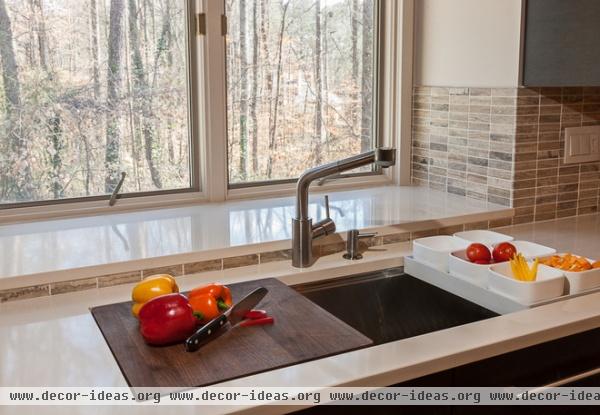
Sink Accessories
Pros: Sink manufacturers are making the sink work harder with myriad accessories built to perfectly fit on the lip of the basin. The choices include cutting boards, prep bowls, knife blocks, colanders and racks for dishcloths or cleaning utensils. These items can centralize and organize prep work.
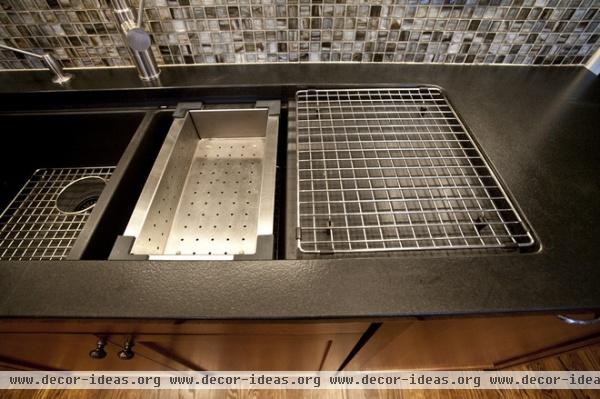
Cons: To achieve a perfect fit, it’s best to buy directly from the manufacturer. If you subscribe to the “basic is better” school of thought, sink accessories are not for you.
Burcher says since the accessories are usually designed to be removed for cleaning and when not in use, where to store them has to be considered. He also notes that if a sink manufacturer doesn’t make the accessory you want, a designer can have it custom made.
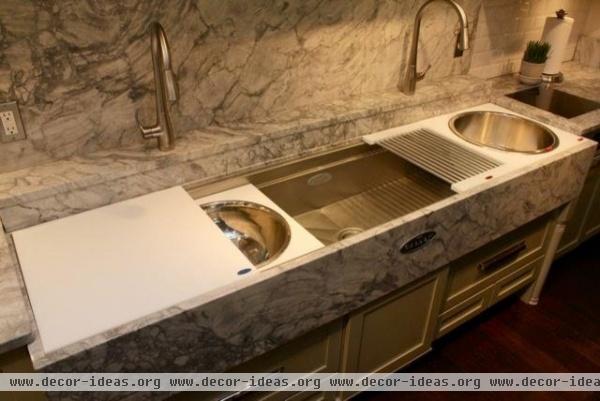
Kosher-Friendly Galley Sink Accessories Specialized Sink Configurations
1. Sink systems.
Pros: More manufacturers are making very specialized sink systems, such as the galley sink. In units such as this one, everything from rinsing to chopping to serving (made possible by ice chest and condiment container inserts) happens at the sink.
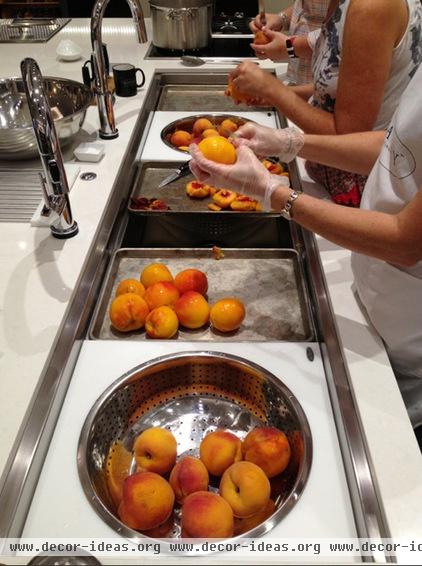
Canning at the Galley Sink Cons: This sink can take up a lot of countertop space, although the prep areas it provides may make up for that.
Because it’s so involved, this option is not for the casual cook. The industrial look makes a strong statement.
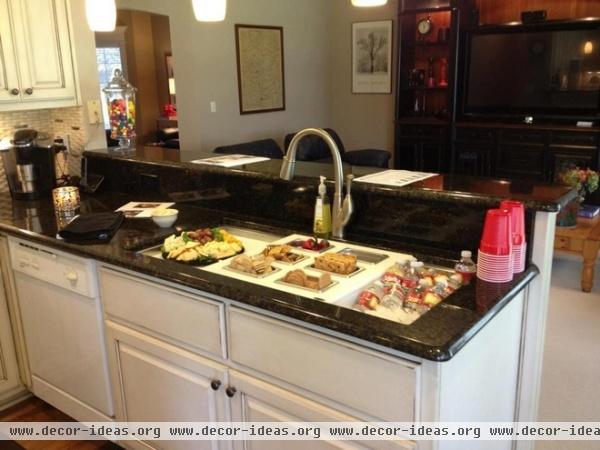
4-Foot Mini Galley Sink If you plan to use your sink as a serving center, it’s best to have a secondary sink.
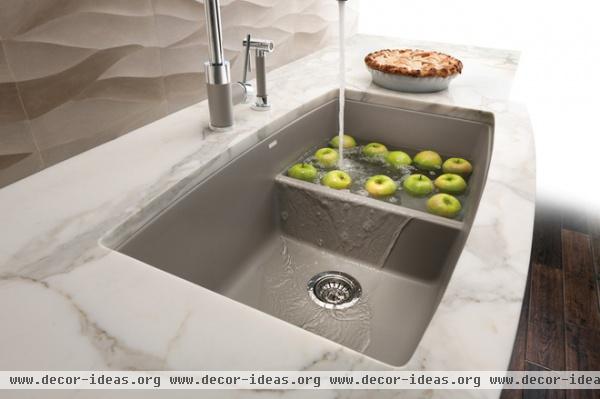
Divided Sink 2. Lowered Divider.
Pros: Want to have a double sink and be able to comfortably wash or soak a long-handled pan? A sink with a lowered divider might be for you.
Cons: If your cooking style demands deep water, this is not an ideal configuration.
“So much is possible,” says Burcher. “With so many options and custom possibilities, if you can dream it, there is usually a way to do it.”
Is the sink your favorite element of the kitchen? Tell us what kind of sink you like and why.












